Summer is always associated with the riot of paints and abundance of flavors, many flower flower beds and the roam of insects around colorful inflorescences. In the midst of the summer season, the flowerflowers of Iris bearded, the bright flowers of which like fragments of the rainbow are scattered across the flower bed. These seem to be familiar, but such fresh and bright flowers are always a look.
Many consider them rustic, but in fact the Iris flower bearded is very multifaceted - a magnificent collection of bearded irises will simply transform a summer flower garden on any plot, make it unique and colorful. Thanks to a huge number of garden varieties of this plant, everyone will be able to pick up the flower that will be perfect to fit the target.
In this article, we consider the peculiarities of growing iris bearded - the most popular view among the gardeners, we give a description of the varieties of this flower, as well as note the basic rules of how to plant an Iris bearded and how to care for it.
Botanical description and features of Iris Bearded
Iris Bearded is a perennial rhiza plant, which belongs to the family of lusing or iris. These bright and unusual flowers can be found almost on all continents, so without false modesty, Iris Bearded is worth calling an international flower. It is so unique flowers that it is difficult to even convey their beauty and main features. Irises bearded in nature can easily cross each other and thereby create new bright varieties. It was this feature that attracted breeders from around the world and allowed to bring several tens of thousands of different varieties of iris bearded.
There are a large number of legends associated with the appearance of this flower on Earth, with the origin of its name. From the Latin Iris translates as "Rainbow". This was how the ancient Greek goddess Rainbow Irida, who was a link between the gods and people. She personally had a beautiful and fragile girl with two gentle wings behind her back, ready to take off in the slightest appeal to heaven, sparkling with all the shades of the rainbow. In honor of this goddess, the flowers of irises were named, who like the smallest fragments of the rainbow, decorate the fields and meadows. There is another legend of this beautiful flower. It refers us to the times of the gods and the appearance of Prometheus in the world. At the moment when Prometheus gave people a fire, a rainbow flashed in the sky, which gave people light and joy all day, all evening and all night. So nature expressed its glory. And when the sun rose in the morning, there were no rainbow in the sky, but the whole earth was covered with bright colors of irises that reminded the fragments of a colorful rainbow.
The first mention of the colors of Iris was recorded 2000 years ago. The drawn flower was discovered by archaeologists in Minos Palace, and many years later Iris became a sacred and revered flower on the island of Cyprus. Now Iris's flower bearded is a favorite flower not only numerous breeders, for whom it is a pleasure with it, but also millions of gardeners who appreciated his beauty and unpretentiousness.
Description of iris bearded:
- Iris Bearded is a perennial rhiza plant, which has been widely distributed worldwide.
- Today there is a rather complicated classification of the types of iris, in which the usual gardener is difficult to figure out. Therefore, fans of this extraordinary flower are grouping all the varieties are very simple: bearded and not bearded. Bearded irises are the most popular species that attracts gardeners with a bright coloring and an interesting form of inflorescences.
- Root system in bearded irises surface, sometimes shown from the ground. It has many small filamentous roots. In appearance, there are several one-year seals, which are sprawling and allow the plant to grow.
- Each spring from the rhizomes grows the annual color, where flowers are blooming in the future.
- Leaves from iris beardato long and flat, in shape can be mild or linear, very thin, covered with a waxy chain.
- There are leaves with double row fan beams at the very base of the bloody. These are root leaves. Stroke leaves are small, there are very few of them.
- Light green leaves color.
- In height, bearded plants are divided into several groups: dwarf - up to 35 cm high, intermediate - 40-75 cm height and high bearded irises - up to 2 m high.
- The main decoration of the bearded iris is his flowers that are striking the variety of shades and an intricate form.
- The flower consists of 6 petals that are located in two tiers. Three of them climb the dome up, and the remaining three are slightly lowered and bent down. Petal coloring more often all multicolored: red-orange-yellow, blue-blue, purple-blue with white. Among the entire variety of shades is not only purely red.
- The name of the Iris Bearded variety went from a small beard on the bent petals, which consists of small woolen hairs of often a contrasting shade. Hence the name of this variety.
- Flowers in iris bearded can be single or collected in small inflorescences. A large bush on one blur can be about 10 colors.
- Blossom starts approximately at the end of May or in early June. One flower can bloom 3-5 days.
- Some varieties have a pleasant aroma, so they are often grown by industrial purposes to obtain essences for cosmetology.
- After flowing colors on the plant, fruits appear in the form of a three-year box.
Variety of varieties of iris bearded
For a long time, Irises have been considered one of the most popular gardening, a variety of colors and forms of which simply amazing. The most popular on the right are bearded irises, the group of which includes about 35,000 different varieties, which are characterized by a height, shape and sizes of inflorescences, color. Today there is a very difficult classification of species and varieties of irises, which is quite difficult to understand ordinary gardeners. Many are still distributed on the beard on the petals. Consider a description of the best bearded irises.
- Grade "Beverly Hilz". This is a tall iris bearded, in the height of the blooming can reach about 90 cm. The leaves of this flower are long and narrow, have a bright green shade. Bearded Iris Kostik quickly grow up. The flower of medium size, its shade of the coral and pink with a lace beard of a reddish color. Berevlya Hilz breast bloom begins in early July.
- The variety of iris bearded "Burgomaster". Another tall grade, whose bloom in height can reach about 80 cm. Medium-sized flower, petals around the edge have orange-purple color, inside dark purple. Inside the flower petals have a little yellowish color with a pinkish tint.
- Grade "Batik". This grade of the iris bearded in height can reach about 70-80 cm. The leaves are narrow, their bright green is not losing until the end of summer. Flowers are quite large, up to 16-16 cm each. By the name of the variety it is clear that the color of the petals will be in the well-known batik art technique. Flower of purple shade with lots of white streams.
- Sort "Summer Nochka". Beautiful, tall bearded iris grade, which can reach 80-90 cm in height. Middle-sized bright purple shade flowers with a yellow core. The flowering of this variety of Iris begins at the beginning or mid-July. Flowers have a pronounced fragrance.
- Sort of iris bearded "Starfall". The tall grade of iris bearded, which is height to reach 75-80 cm. Medium-sized flowers, their shade light yellow with a bright orange beard.
- The variety of iris bearded "Arkady Raykin". Tall Iris, which has a bright beautiful tint. Middle-sized flowers, whose petals of pink-red color with a contrasting orange beard. Flowers have a strong fragrance.
- The variety of iris bearded "Abkhazia". These are medium-sized flowers, which are distinguished later than flowering. Flowers are large, brown-violet shade. Petals on the edge are very wavy, have many folds, due to which the flower seems to be with a fringe.
- The variety of iris bearded "Guards". This bearded iris variety is considered one of the tallest and fragrant, which will become an excellent decoration of any site. Flowers are large, reach in diameter approximately 15 cm, consist of bright yellow petals.
- The variety of iris bearded "Elbrus Diamond". This variety of Iris is also very popular among gardeners. Tall plant that can reach about 80-90 cm. Flowers are massive, white color with a bright orange-yellow core and streaks on the petals.
- Variety "Curbian Dream". The average grade of the iris bearded, which is characterized by a delicate vanilla flavor. Flowers are large, have a bright blue shade of petals.
- The variety of iris bearded "Krand Heds". This variety of iris is a real miracle of selection. The plants of medium height, the middle of the flowers has a bright purple blue shade, extreme petals - silver-blue. The flower is characterized by a wonderful aroma.
- Grade "Noon in Rio". Beautiful bearded iris grade in bright purple tones. Flower petals bright purple with lace wavy edge. The beard has a golden color.
- Sort "Nin Live". The dwarf variety of iris bearded, which in height can reach about 25-35 cm. Central petals of creamy-creamy, extreme petals dark red-burgundy with a wide light rose border and central golden stain.
Bearded iris reproduction: common ways
Most often, the landing material of the bearded irises is purchased from specialized stores. However, if on your site all the same growing a beautiful bush of this bright flower, you can try to dilute further a lot of young plants. For this, several ways are suitable: seed reproduction, vegetative reproduction - fission of rhizomes, kidney. Consider in more detail the main nuances of each breeding method.
Seed reproduction of iris bearded
- Semyon reproduction is extremely rare, since in its process the plant completely loses maternal signs.
- First of all, it is necessary to collect seeds in the fall, then decide on sowing time.
- For this, the seeds can be sown in autumn or spring. However, with the spring landing, the seeds must pass the stratification process.
- Seeds must need to soak and then dry. Next, they are mixed with pure large sand and placed in a container, after which they put in the refrigerator.
- If you decide to sow immediately after collecting the seed, you must prepare the soil in advance, sleep it and explode.
- After that, place the seeds into the ground to the depth of approximately 1.5-2 cm.
- Shoots will appear in the spring, but most of them are spawned only for the second year after landing.
The reproduction of iris bearded rhizome
- This method of reproduction is considered the most popular and frequently used, since every three years of the bushes of the bearded iris still need to be traced due to loss of decorativeness.
- It is possible at the end of the summer peace of the iris at the end of the summer peace of the root.
- For this, the bush can be turned off completely or separate the decenes immediately from the bush growing on the flower bed.
- Dropped rhizome need to be washed under water, after which it is to divide into the required number of deteen in such a way that each sides have several healthy kidney, a sufficient number of roots and fan of leaves, consisting of 5-7 leaves.
- Fan leaves shorten up to about 15 cm, the roots also need to be cut to 10-15 cm.
- After that, the decene is soaked in a weak solution of manganese, after that they need to let go in the sun.
- Dellets are planted at a permanent place.
- Irises, planted with the help of a decend, can be blooming next year.
The reproduction of iris bearded by the kidney
- Sometimes gardeners resort to the budding method of reproduction of the irises of bearded. This is especially true when urgently need to dilute rare varieties of iris bearded.
- Each rhizome has stubborn kidneys in the form of small tubercles.
- It is necessary to cut the rhizome to several links with kidney or knife cut the kidney.
- After that, the resulting kidneys must be processed by a solution of manganese or another disinfectant and plant in containers or cutters for rearing.
- In this way, you can immediately get a large number of young plants.
Preparation before landing Iris Bearded
Iris bearded is one of the most popular colors in flower water, since in this beautiful plant is the beauty and brightness of inflorescences and unpretentiousness in cultivation. However, like any other culture, Iris bearded before his landing requires careful preparatory work, which is to acquire a high-quality and healthy planting material and choosing on its site of an ideal plant for landing. Only after that you will get a beautiful and plentiful flowering plant.
Stage 1. Selection of varieties and seedlings Iris Bearded
- First of all, you need to decide on the selection of a specific Iris Bearded Sort. It is not easy to do so, since today there are more than 35,000 varieties of this beautiful view of the plant.
- Choose an iris bearded grade depending on the landing site. More tall varieties can be purchased for the central part of the flower beds, and the lowest will ideally look as a curb plant.
- BUY DELECTION IRISA is needed only in a specialized store or garden center, only so you can be confident as an acquired material. You can also take the merits of Iris from familiar at the moment when Iris Bearded is transplanted.
- In the stores, Delleki most often sold in transparent bags with filler, for example, with sawdust.
- Carefully inspect the decene, it is better to choose large and healthy decene, which are faster to root and bloom.
- The purchased decene must have at least one link with the kidneys and roots. The rhizome itself should be dense and elastic, without traces of rotting and softening. It should explicitly be visible yellowish specks - signs of the appearance of future roots.
- Delleka can be bought at any time of the year, since this planting material is not afraid of dried. The main thing is impossible to store it in the package.
Stage 2. Choosing a place for landing Iris Bearded
- Iris Bearded is considered an unpretentious culture and does not require the creation of special conditions for growing, however, to obtain a bright flowering flower it is important to choose the right place correctly.
- Iris bearded will be perfectly growing perfectly in the sunny plot, only a small shading is allowed in the afternoon.
- Do not land the irises in the shade of trees or shrubs, since the rhizome of this plant does not endure any shading.
- The place you choose should be protected from drafts and a strong wind, since a strong impulse can simply break the gentle flowers of the bearded iris.
- It is best to plant irises on an inclined plane, as these flowers do not like moisture stagnation at the rhizomes.
Stage 3. Choice and soil preparation for iris bearded
- For landing of the irises, it is important to find a plot with a neutral or weakness of the soil reaction. If there is no such, then with a strong acid soil, you can add lime, and with severe - peat and sand.
- The soil should be light and breathed, even rocky soil is suitable.
- Do not land the bearded irises on clay soils that delay moisture.
- On the soil there should be no large number of weeds that can become a carrier of diseases. A large amount of organic matter is also very bad for colors.
- Before boarding, carefully disappear selected area and break the place well.
Bearded Iris Planting - Instructions
- The landing of iris bearded in the fall is carried out when the roots of the plant become solid and dense and will not break.
- Next, on the desired place prepared in advance, dig the desired number of the landing wells, the size of which will depend on the size of the deteen.
- At the bottom of each it is important to pour a good layer of drainage, since this plant does not carry a long stagnation of moisture in the roots. As a drainage you can use small stones, crumbs or large and pure sand.
- Further, in the center of the wells, you need to pour a small soil hollyk and put on it a deceive of Iris bearded, and all the roots distribute around it.
- After that, it is necessary to pour the roots of iris soil, and the rhizome itself is slightly covered with clean sand layer approximately 1-2 cm.
- If you land the decene in the fall, it is necessary to hide them with mulch so that they do not extinate. With a summer planting, the plants will have to root.
- After planting plants you need to pour.
Grinder of Bearded Iris Growing: Secrets and Nuances of Care
Irises bearded rather unpretentious plants, however, despite this, constantly need regular and close care, which should be elementary actions familiar to each gardener. Proper care for bearded iris will provide beautiful and bright flowering plants.
- Watering. Irises bearded have a feature to accumulate moisture in their rhizome, so they can do without watering for a long time. To bring water under the root of these plants only with a strong heat and explicit soil drying. Also in abundant moisture soil need young decene.
- Swimming and weeping. Irises also need regular loosenings. However, it is important here to remember that the root system of this plant is superficial, and the tuber can at all be located on the surface. Therefore, it is necessary to loosen very neatly, trying not to damage the tuber who will be hard to recover. It is important to constantly remove weeds that can become a source of illness.
- Feeding Irises bearded react well to making feeding, but it is necessary to choose fertilizers with minimal content of nitrogen, as well as the less components. Typically feed the plant three times per season. The first feeding is made in spring before the start of flowering - approximately at the end of April. In this case, you can use a sodium salter. The second feeding is carried out during the bootonization period when ammonium sulfate can be used as a fertilizer. The third feeder is recommended to spend two weeks after flowering. At this time, you can feed the irises with phosphoric and potash fertilizers.
- Transplant Iris. A few years after the landing, the root of the plant begins to grow, and the central part becomes lifeless. In this case, it is recommended to carry out the transplant of the bearded iris, as the flower loses its decorativeness, the flowers become shorter, and the flowers are less. It is recommended to transplant irises every 3-4 years. The dwarf forms of iris bearded can be transplanting less often, as they can grow in one place under 10 years.
- Trimming. After the fruit of the iris, its bloomers need to be cut, and before the winter onset and the leaves of the plant at an altitude of 10-15 cm are cut.
- Shelter for the winter. Russian bearded iris varieties can winter and without shelter. However, more delicate imported varieties should still be covered. For this, the soil is dipped with peat and covered with fallen foliage, desired oak, as rodents do not live in it. After that, plants are covered with vegetables.
Bearded irises - Photo
Bearded irises are the most popular representatives of their family who have long been pets of many gardeners. These luxurious flowers with their bright colors can replace the whole flowerbed of other flowering plants, and they will not require additional effort or spending.

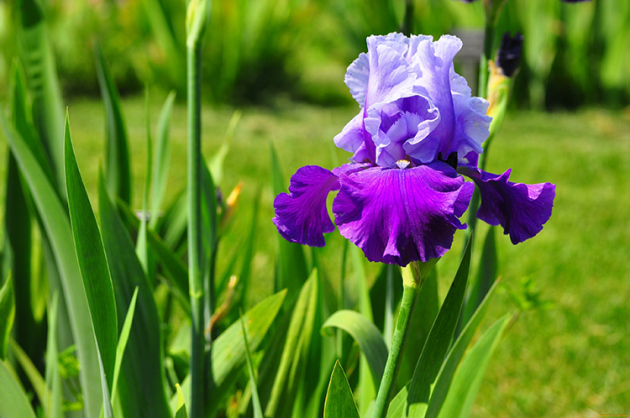
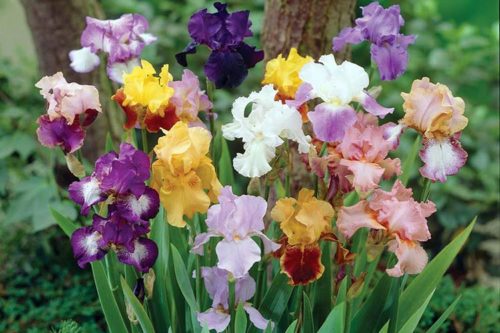
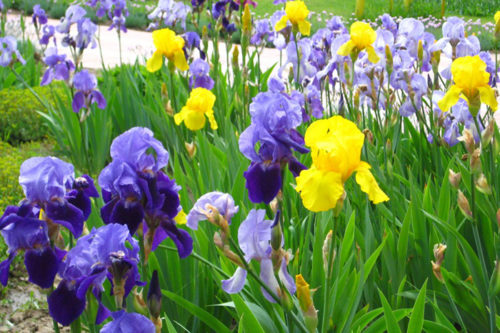
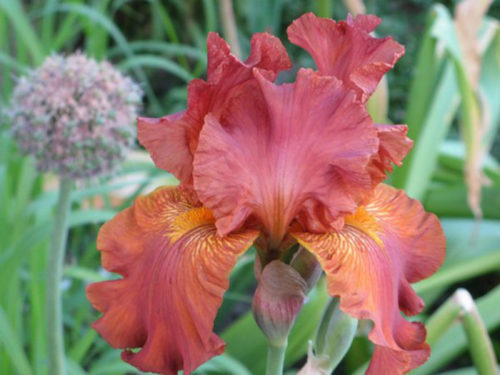
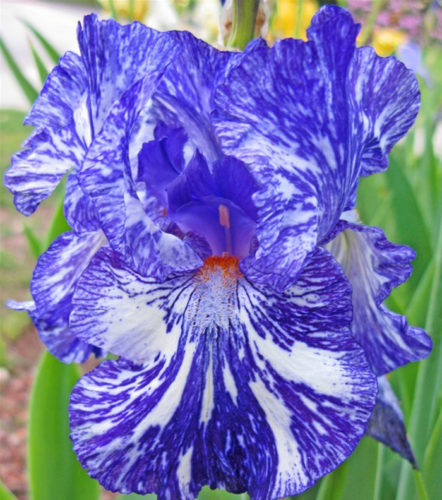
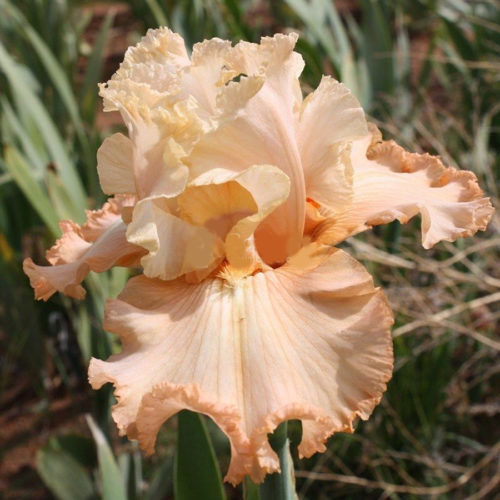
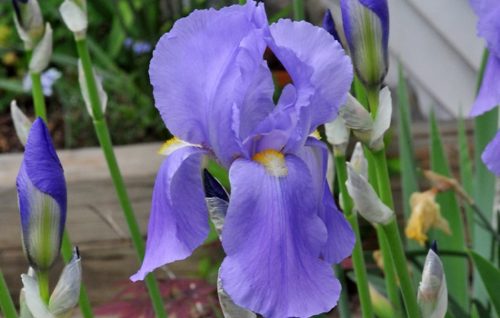
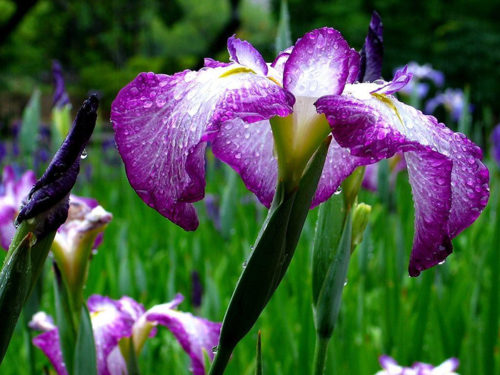
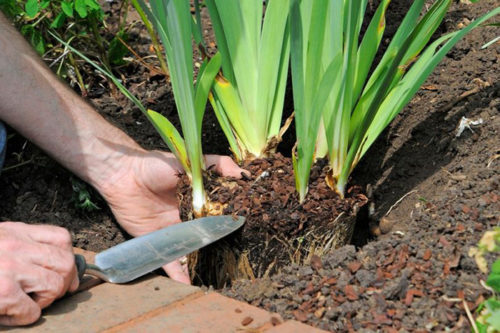
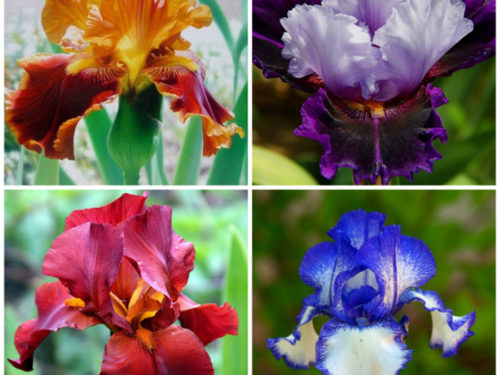
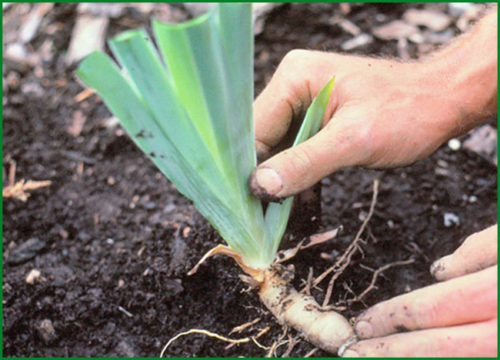
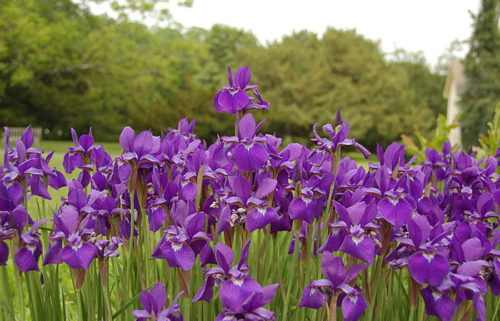

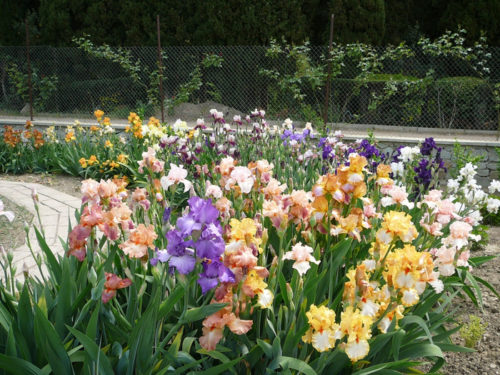
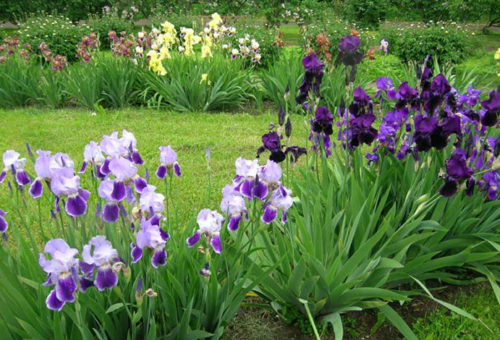
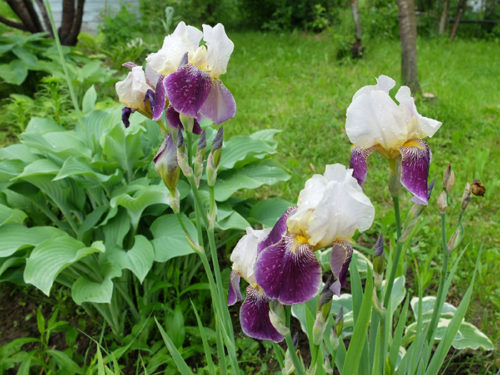
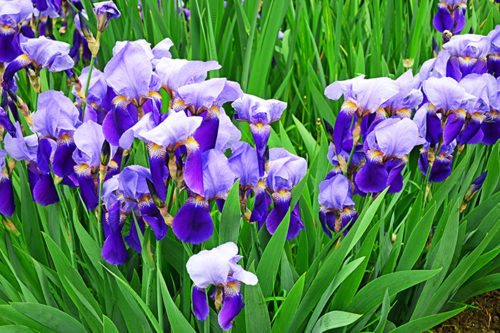












 Start a discussion ...
Start a discussion ...